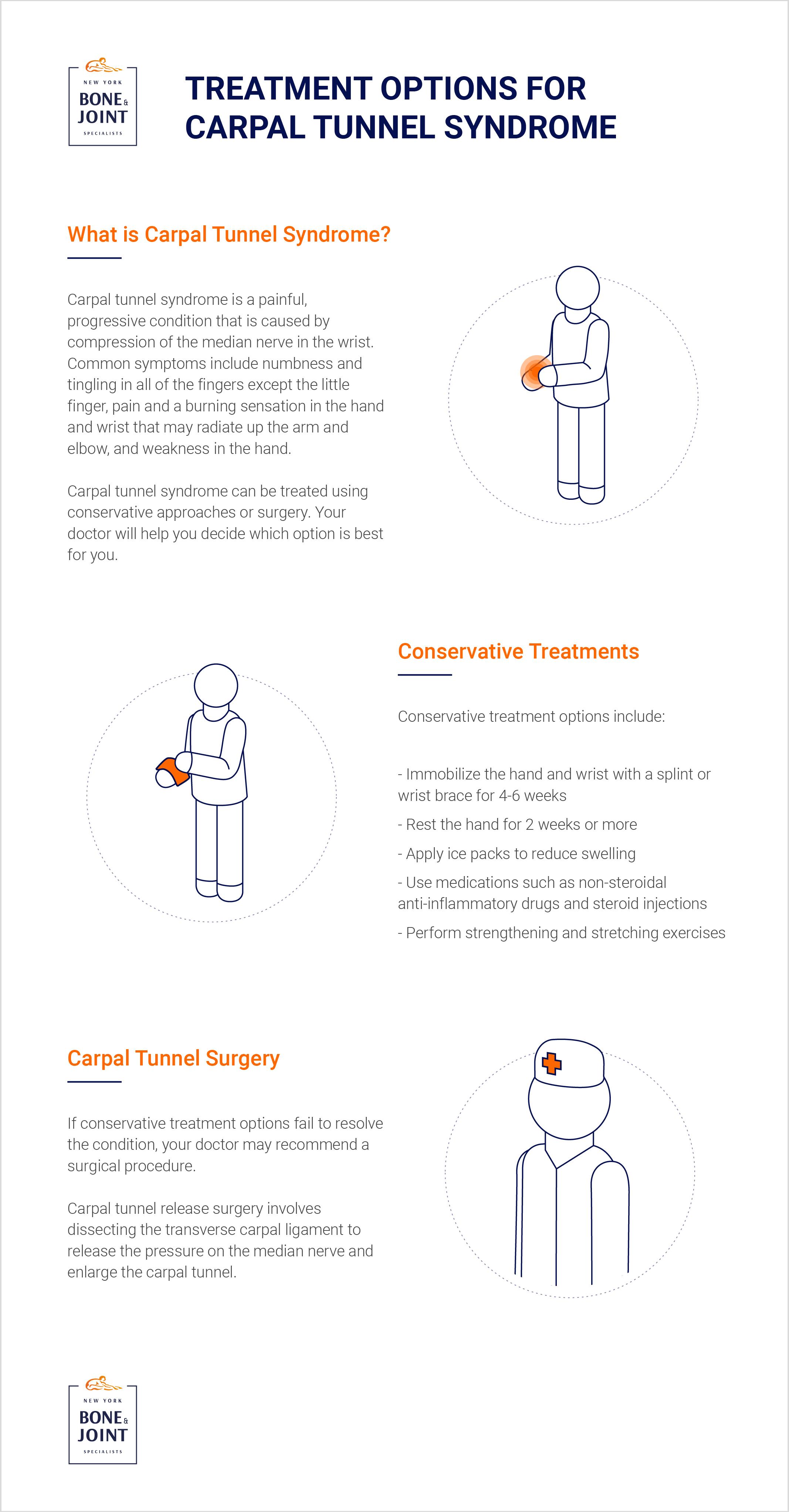Carpal Tunnel Syndrome is a common, painful, progressive condition that is caused by compression of the median nerve at the wrist area.
SYMPTOMS
Common symptoms of carpal tunnel syndrome include numbness and tingling sensation in all the fingers except little finger; pain and burning sensation in hand and wrist that may radiate up the arm and elbow; and weakness in hand with diminished grip strength.
CAUSES
Exact causes of the condition are not known. However certain factors increase the risk of developing carpal tunnel syndrome and they include congenital abnormalities, repetitive motion of hand and wrists, fractures and sprains, hormonal imbalance, and other medical conditions such as hypothyroidism, rheumatoid arthritis, diabetes, obesity, gout, overactive pituitary gland, or the presence of a cyst or tumour in the canal.
CONSERVATIVE TREATMENT OPTIONS
Carpal tunnel syndrome may be treated using conservative approaches or surgery. The conservative treatments include:
- Treating underlying medical conditions
- Immobilization of the hand and wrist with a splint or wrist brace for 4-6 weeks
- Rest the hand for 2 weeks or more
- Ice packs to avoid swelling
- Avoid activities that tend to worsen the symptoms
- Medications such as nonsteroidal anti-inflammatory drugs and steroid injections
- Strengthening and stretching exercises once symptoms diminish
SURGERY
If conservative treatment options fail to resolve the condition your surgeon may recommend surgical procedure.
CARPAL TUNNEL RELEASE SURGERY
Carpal tunnel syndrome can be treated with carpal tunnel release surgery. Traditional surgery involves up to a 2- inch incision in the palm and wrist area, whereas endoscopic surgery involves one or two half-an-inch incisions and the use of an endoscope. During the surgery, the transverse carpal ligament will be dissected to release the pressure on the median nerve and enlarge the carpal tunnel. Your surgeon will decide which options are best for you based on your general and medical conditions.
POST-OPERATIVE CARE
Your surgeon may suggest you to practice certain post-operative procedures for better recovery and to avoid further complications.
- Elevate the hand above heart level to reduce swelling.
- A splint may be worn
- Ice packs to the surgical area to reduce swelling.
- Keep the surgical incision clean and dry. Cover the area with plastic wrap when bathing or showering.
- Physical therapy may be ordered to restore wrist strength.
- Eating a healthy diet and not smoking will promote healing
RISKS AND COMPLICATIONS
The majority of patients suffer no complications following carpal tunnel release surgery. However some patients may suffer from pain, infections, scarring, and nerve damage causing weakness, paralysis, or loss of sensation and stiffness in the hand and wrist area.
_________________________________
EXPERIENCING PAIN? DO YOU HAVE AN INJURY?
Our Specialists are here to help.
Book an appointment with NYC’s best orthopedic specialists to discuss your condition. Fill out the form below and you will receive a call from our office within 5-10 minutes. We’ll book an appointment at a time and location that work for you, and send you a reminder by email.




